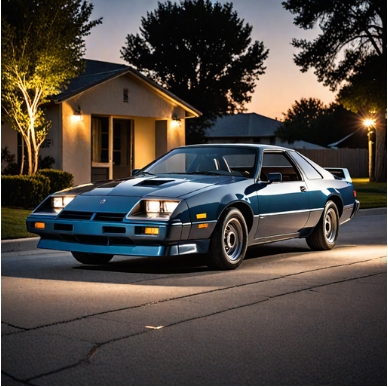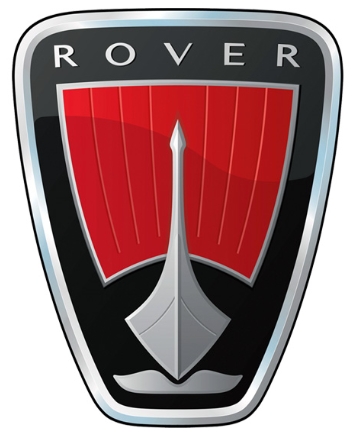The Evolution of the Chevrolet S10: A Comprehensive Overview
The Chevrolet S10, an emblem of American automotive ingenuity, has left an indelible mark in the compact pickup truck market since its introduction in the early 1980s. From its inception to its discontinuation, the S10 underwent significant transformations, adapting to changing consumer needs and advancing technology. This article will explore the evolution of the Chevrolet S10, detailing its production years, models, and trim levels.
1. The Birth of the S10 (1982-1993)
Introduction and Production Years
The Chevrolet S10 was launched in 1982, developed as a response to the growing popularity of compact pickups. It was introduced alongside the GMC S15, representing General Motors’ entry into a competitive market dominated by models like the Ford Ranger and Toyota Hilux.
First Generation (1982-1993)
The first generation of the S10 spanned from 1982 to 1993 and was built on GM’s “S” platform. This generation featured a distinctive boxy design that became representative of ’80s and early ’90s truck aesthetics. It was initially offered as a two-door standard cab, but the options quickly expanded to include a four-door crew cab starting in 1986.
Trims and Models:
- Base
- S
- Sport
- LT
- SS (Super Sport)
- ZQ8 (High-Performance)
Throughout the ’80s, the S10 was available with various engine options, including an economical 1.9-liter four-cylinder and a 2.8-liter V6. The SS variant, introduced in 1989, featured a performance-oriented 4.3-liter V6 and sport-tuned suspension, positioning it as a sporty alternative in the compact truck segment.
2. The Update and New Features (1994-2004)
Second Generation (1994-2004)
The S10 entered its second generation in 1994, sporting a more rounded design that resonated with contemporary automotive trends. The increase in safety features, along with a more refined interior, marked a significant shift in consumer expectations for pickups.
Trims and Models:
- Base
- LS
- LT
- Z71 Off-Road
- S10 Xtreme
The second generation introduced an extensive range of engine choices, including the 2.2-liter four-cylinder and later a more robust 4.3-liter V6. The Z71 trim was specifically designed with off-roading enthusiasts in mind, featuring increased ground clearance and heavy-duty shocks. The S10 Xtreme, introduced in 2000, was a sport-oriented model with a lowered stance and aggressive styling, appealing to a younger audience.
.

.
3. The Final Years of Production (2005-2012)
Final Generation (2005-2012)
The Chevrolet S10’s final generation debuted in 2005. Unlike its predecessors, this generation underwent subtle updates instead of complete redesigns. The S10 was noted for its robust performance and cargo capabilities, even while facing increasing competition from full-size trucks and imports.
Trims and Models:
- Work Truck (WT)
- LS
- LT
- SST (Sport Special Truck)
By this time, the S10 was offered primarily as a more utilitarian option, catering to both small-business owners needing reliable workhorses and consumers seeking functional personal vehicles. Engine variations remained largely consistent with updated specifications, including a 2.9-liter four-cylinder engine and a 4.3-liter V6 option.
Despite its long-standing legacy, production of the Chevrolet S10 came to an end in 2012, with the last units rolling off the line. In the wake of declining sales and changing market dynamics, Chevy decided to shift its focus to larger models. However, the S10’s legacy was far from over.
4. International Variants and Resurgence
Although production of the S10 in the U.S. ceased in 2012, the model lived on in international markets, particularly in South America. The Chevrolet S10 was reintroduced in Brazil in 2012, featuring a contemporary design and updated technology that appealed to a global audience.
Newer Brazilian Models (2012-Present):
- LT
- LTZ
- Z71
- High Country
The Brazilian version of the S10 underwent several facelifts and enhancements over the years. It was equipped with modern amenities such as touchscreen infotainment systems, advanced safety features, and engine options that complied with local regulations. This version became a top seller in Brazil and other South American countries, showcasing the S10’s adaptability to different markets.
5. The Impact of the Chevrolet S10
The Chevrolet S10’s influence on the pickup truck market cannot be overstated. It broke ground as one of the first compact pickups, setting the standard for small trucks over the decades. Its various trims and models allowed it to cater to a wide array of consumers—from casual drivers to construction workers needing a reliable vehicle.
Cultural Significance
Throughout its life, the S10 became part of American culture, often associated with independence and rugged utility. This connection was further solidified with numerous appearances in films and television shows, embodying the ‘everyman’ image of a reliable truck.
Legacy and Community
The S10 also built a strong community of enthusiasts who continue to support and modify their vehicles, ensuring the S10 remains relevant in car culture. Online forums and clubs dedicated to the S10 allow enthusiasts to share tips, restoration projects, and experiences, keeping the spirit of the S10 alive.
Conclusion
The Chevrolet S10 represents a significant chapter in the history of American pickups. From its launch in 1982 to its continued popularity in international markets, the S10 has adapted through changing market dynamics and consumer expectations. As an icon in automotive history, it showcases the bridge between utility and style, resonating with generations of truck owners. Even as the model has evolved or migrated internationally, its core principles of ruggedness, reliability, and adaptability remain a driving force in the compact pickup segment and among loyal enthusiasts worldwide.







